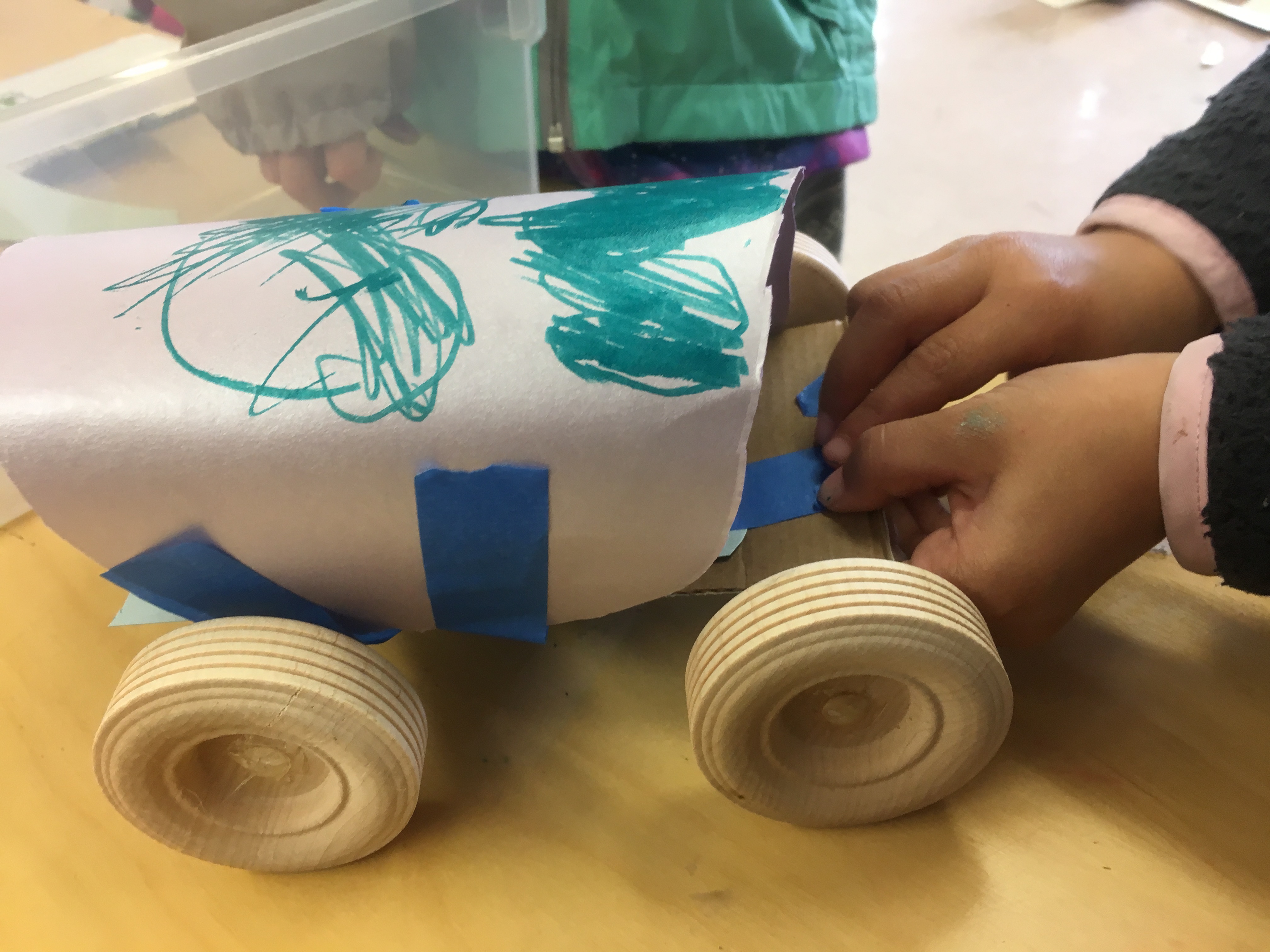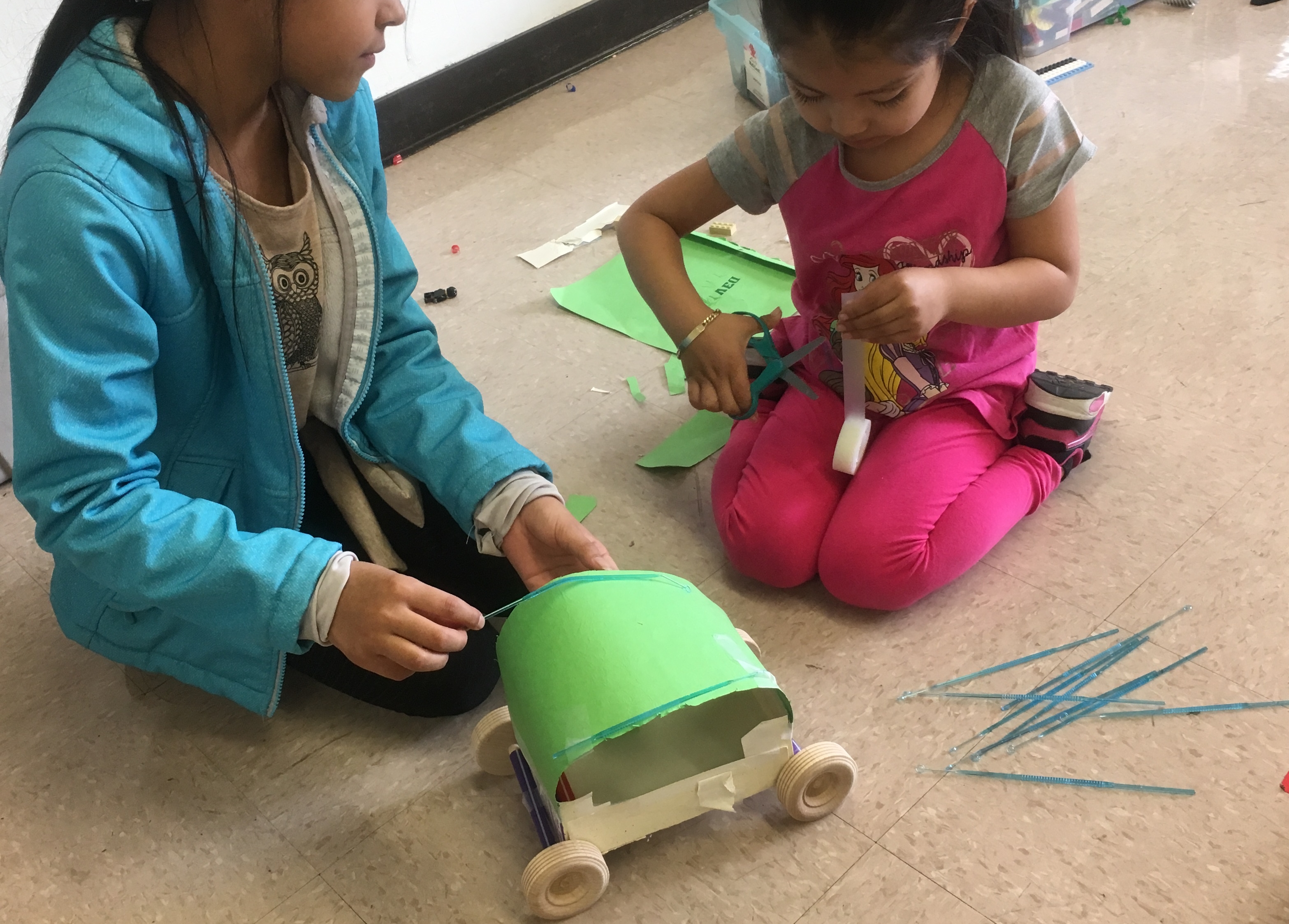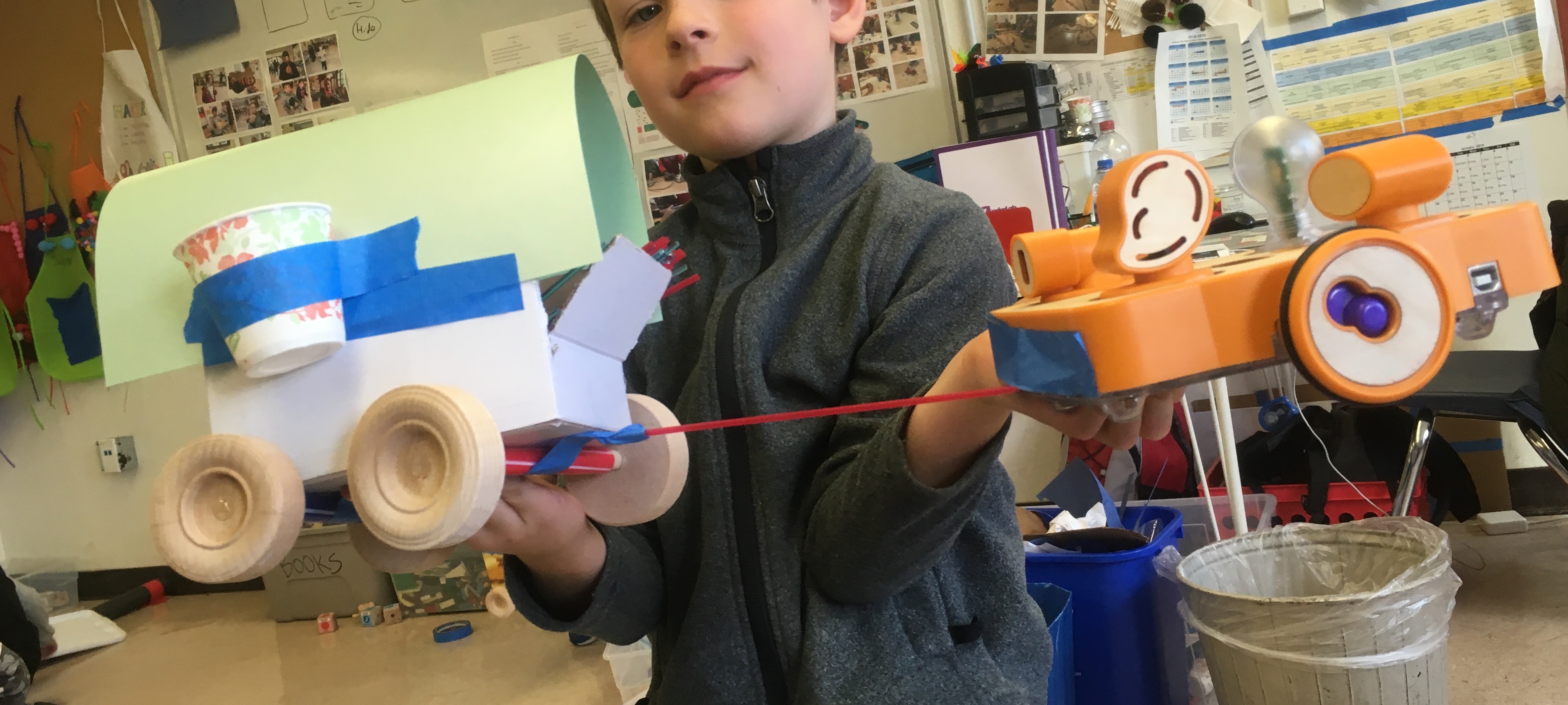Covered Wagon – Now & Long Ago (Kindergarten)
This lesson expands on the Build A Cart lesson from kindergarten science. This lesson provides a good opportunity for partnering kindergarten students with a grade 4 or 5 student. Younger students can struggle with fine motor skills necessary for cutting and manipulating materials. Having an older partner can make the job easier and provide an opportunity to build empathy.
- Students use pre-made axels with wheels attached to build a cardboard cart.
- Students use the cart to build a covered wagon based on informational text, stories, and videos of early America.
- Students attach a Kibo Robot to pull their cart over a ramp.
History-Social Science Content Standards for California (2000)
Major Theme of Kindergarten: Learning and Working Now and Long Ago
“Historical empathy for how people lived and worked long ago reinforces the concept of civic behavior: how we interact respectfully with each other, following rules, and respecting the rights of others.”
K.6 Students understand that history relates to events, people, and places of other times.
3. Understand how people lived in earlier times and how their lives would be different today (e.g., getting water from a well, growing food, making clothing, having fun, forming organizations, living by rules and laws).
NGSS
Performance Expectation. K-PS2-2. Analyze data to determine if a design solution works as intended to change the speed or direction of an object with a push or a pull.
Clarification Statement: Examples of problems requiring a solution could include having a marble or other object move a certain distance, follow a particular path, and knock down other objects. Examples of solutions could include tools such as a ramp to increase the speed of the object and a structure that would cause an object such as a marble or ball to turn.
Assessment Boundary: Assessment does not include friction as a mechanism for change in speed.
Disciplinary Core Ideas. PS2.A: Forces and Motion.
- Pushes and pulls can have different strengths and directions.
- Pushing or pulling on an object can change the speed or direction of its motion and can start or stop it.
Crosscutting Concepts: Cause and Effect: Events have causes that generate observable patterns.
Disciplinary Core Ideas. (Engineering)
- ETS1.A: Defining and Delimiting an Engineering Problem
Asking questions, making observations, and gathering information are helpful in thinking about problems. (secondary to K-ESS3-2) - ETS1.B: Developing Possible Solutions
Designs can be conveyed through sketches, drawings, or physical models. These representations are useful in communicating ideas for a problem’s solutions to other people. (secondary to K-ESS3-3)
Covered Wagon Materials List
- Wheels: 2-1/4″ inch Treaded Wooden Toy Wheel at 3/4” inch thick with a 3/8” inch Hole
- Wooden Dowels: 3/8″ diameter, 6″ length
- Extra-Wide Smoothie Straws (1/2″ diameter)
- Cardboard (recycled cereal and tea boxes)
- Masking Tape
- Various Makerspace Supplies:
- Construction paper
- Scissors
- Hot Glue Guns and Glue Stick
- Cups
- Pipe cleaners
- String
- Paint
- Markers






